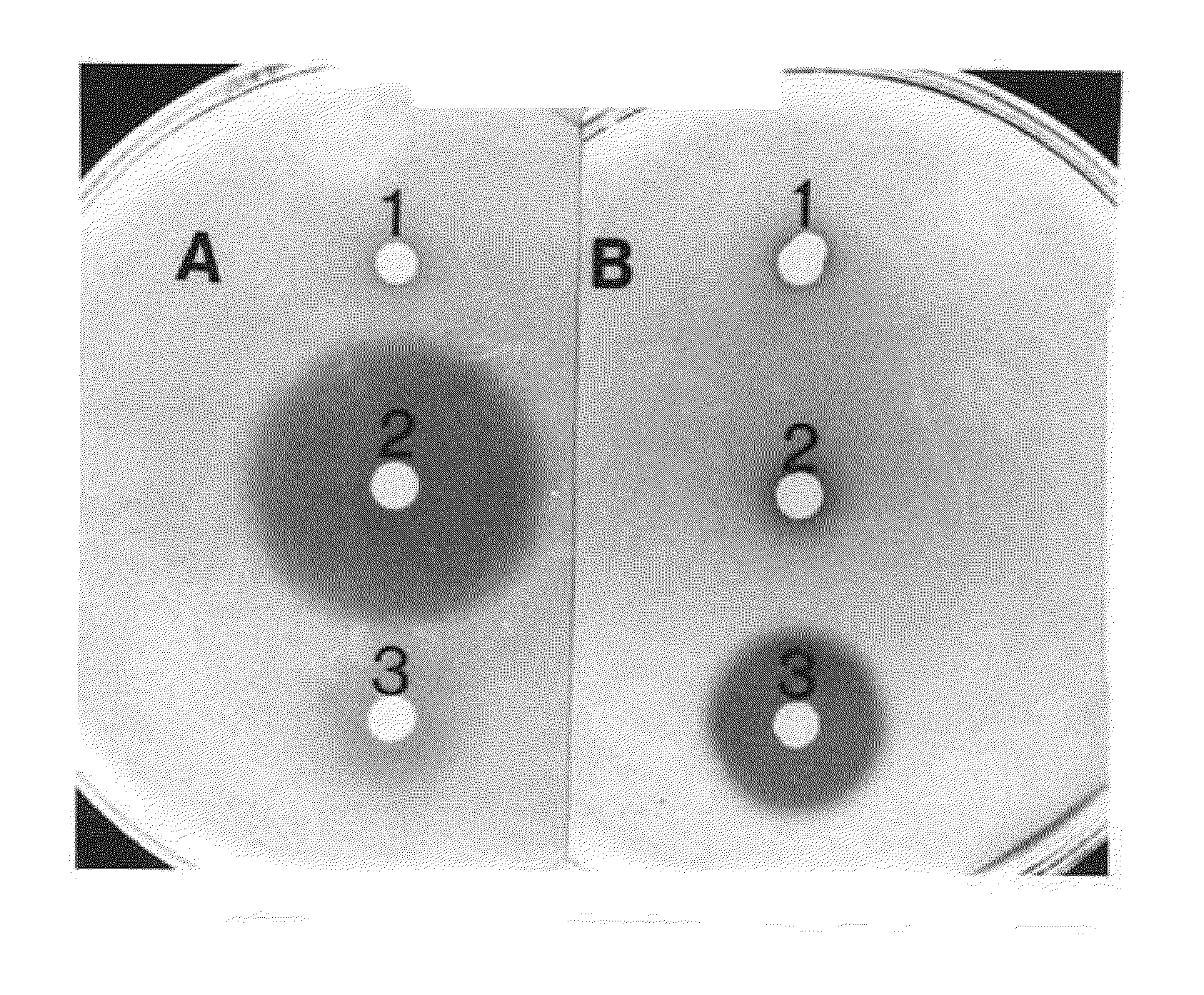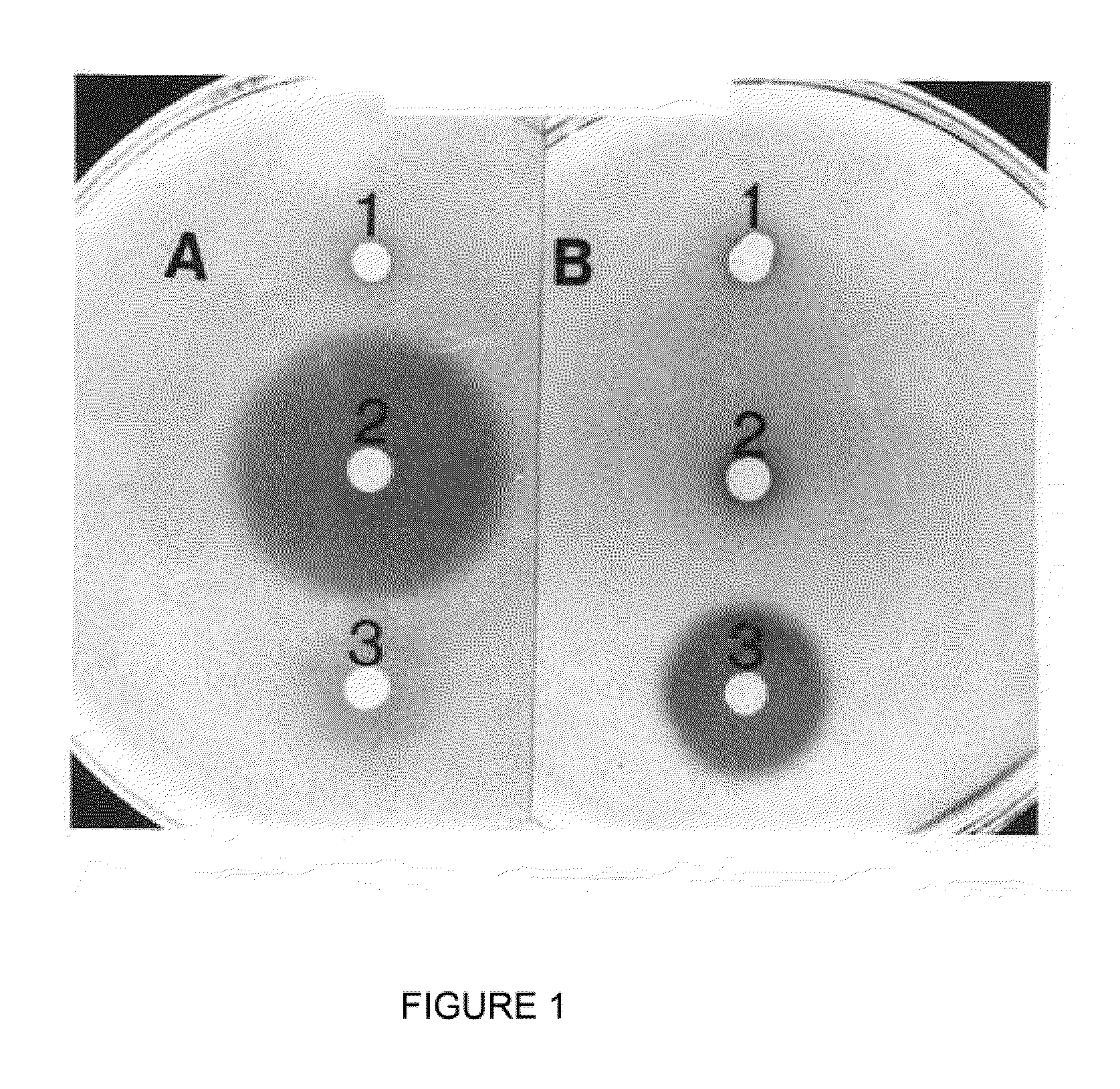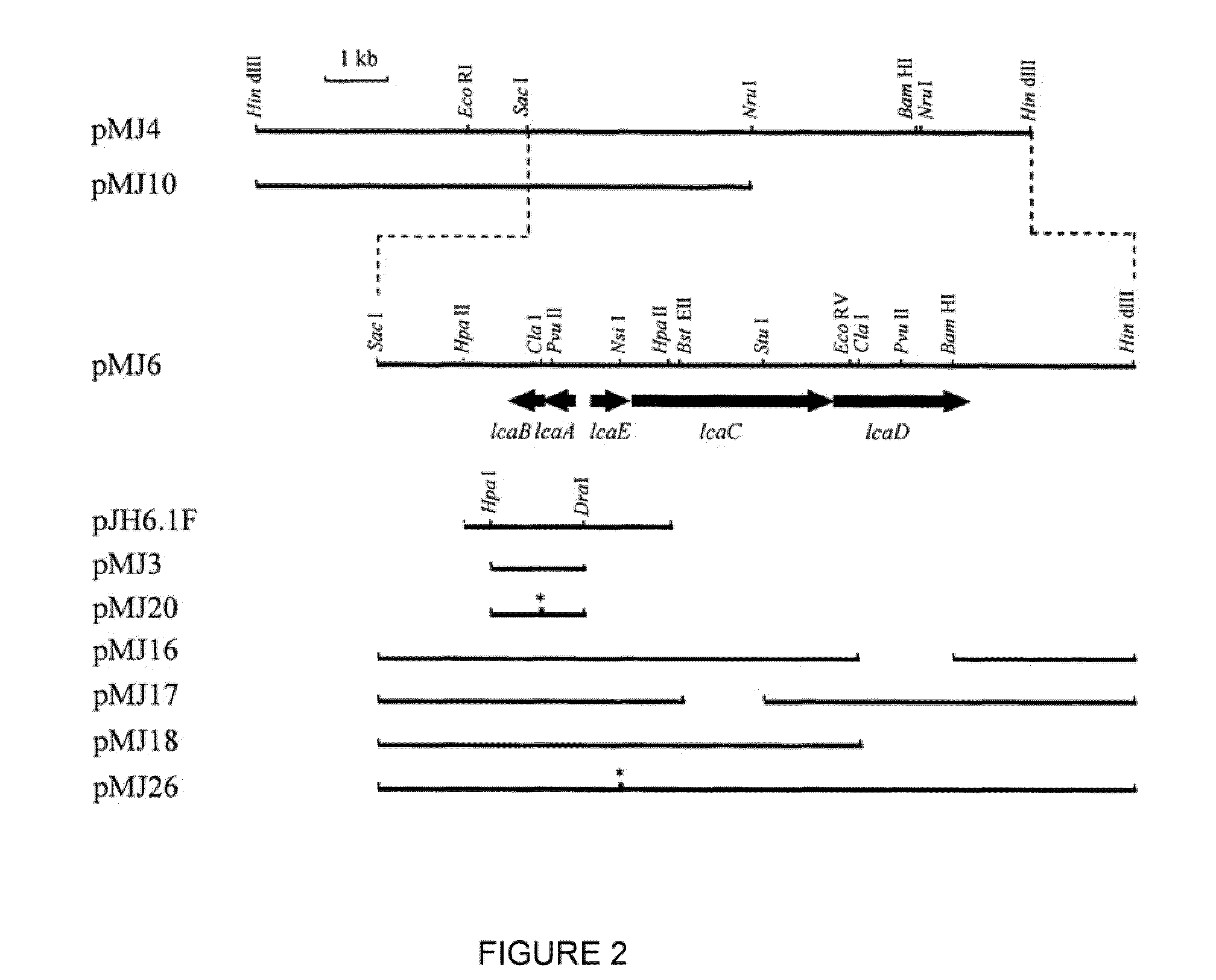Novel Bacteriocins, Transport and Vector System and Method of Use Thereof
a technology of bacteriocin and transport vector, applied in the field of new bacteriocins, bacteriocins, immunity genes, can solve the problems of severe spoilage problems, meat lactics, extended storage life of vacuum-packaged meat, etc., to inhibit bacteria infection of fermentation reactors and inhibit spoilage bacteria
- Summary
- Abstract
- Description
- Claims
- Application Information
AI Technical Summary
Benefits of technology
Problems solved by technology
Method used
Image
Examples
example 1
Bacteriocins, Sources, Methods to Propagate
[0102]Table 1 describes many different bacterial strains and plasmids, the bacteriocins they contain and references which provide additional information about the bacterocin or bacterial strain. For information on the best method to grow a particular organism refer to the appropriate reference or reference therein.
example 2
Method to Use Signal Peptide to Direct the Secretion of Substrates Example Using Divergicin A Signal Peptide and Carnobacteriocin B2 as Substrate
[0103]Bacterial strains and media. Bacterial strains and plasmids used in this study are listed in Table 1. Carnobacteria were grown in APT broth (Difco Laboratories, Detroit, Mich.) at 25° C. without agitation. E. coli was grown in Luria Bertani (LB) medium at 37° C. on a rotary shaker. Agar plates were made by addition of 1.5% (wt / vol) agar to broth media. Antibiotics were added as selective agents when appropriate, as follows: erythromycin 200 μg ml-1 and ampicillin 100 μg ml-1 for E. coli and erythromycin 10 μg ml-1 for carnobacteria. Stock cultures of the bacterial strains were stored at −70° C. in the appropriate broth containing 20% (vol / vol) glycerol.
[0104]Oligonucleotide primer synthesis and amplification reactions. In the 3′ region of the nucleotide sequence encoding the signal peptide of divergicin A there is a HindIII restrictio...
example 3
Method to Use Leader Peptides to Direct Secretion of Substrates Via Dedicated Transport System
[0114]Bacterial strains and media. C. divergens LV13 (Worobo at al., 1995), C. divergens UAL278 (McCormick et al., unpublished), L. gelidum 187-13 and L. gelidum 187-22 (Hastings and Stiles, 1991), and Pediococcus pentosaceus FBB63C (Graham and McKay, 1985) were grown in APT broth (All Purpose Tween; Difco Laboratories Inc.) at 25° C. and 30° C., respectively. L. lactis IL1403 (Chopin at al., 1984) and L. lactis IL1403(pMB500) (van Belkum et al., 1989) were grown in glucose-M17 broth (Terzaghi and Sandine, 1975) at 30 E. coli strains MH1 (Casadaban and Cohen, 1980), DH5((BRL Life Technologies Inc.), BL21(DE3) (Studier and Moffat, 1986), MC4100 (Casadaban, 1976), and ZK796 (Wandersman and Delepelaire, 1990) were grown in TY broth at 37° C. (Rottlander and Trautner, 1970), Solid plating media were prepared by adding 1.2% (wt / vol) agar to the broth media. C. divergens UAL278 cells propagated o...
PUM
 Login to View More
Login to View More Abstract
Description
Claims
Application Information
 Login to View More
Login to View More - R&D
- Intellectual Property
- Life Sciences
- Materials
- Tech Scout
- Unparalleled Data Quality
- Higher Quality Content
- 60% Fewer Hallucinations
Browse by: Latest US Patents, China's latest patents, Technical Efficacy Thesaurus, Application Domain, Technology Topic, Popular Technical Reports.
© 2025 PatSnap. All rights reserved.Legal|Privacy policy|Modern Slavery Act Transparency Statement|Sitemap|About US| Contact US: help@patsnap.com



